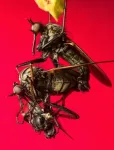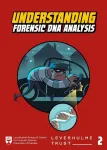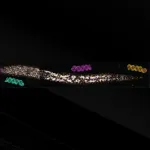(Press-News.org) The study of ‘starquakes’ (like earthquakes, but in stars) promises to give us important new insights into the properties of neutron stars (the collapsed remnants of massive stars), according to new research led by the University of Bath in the UK.
Such explorations have the potential to challenge our current approaches to studying nuclear matter, with important impacts for the future of both nuclear physics and astronomy. Longer term, there may also be implications in the fields of health, security and energy.
The value of studying asteroseismology – as these vibrations and flares are known – has emerged from research carried out by an international team of physicists that includes Dr David Tsang and Dr Duncan Neill from the Department of Physics at Bath, along with colleagues from Texas A&M and the University of Ohio.
The team’s study, published in the impactful journal Physical Review C, examines how asteroseismology in neutron stars can test predictions about nuclear matter.
The scientists found that measuring these quakes from Earth using powerful telescopes provides detailed information about what is happening inside a neutron star. This helps test and validate a theory called Chiral Effective Field Theory, which in turn is key to improving our understanding of the universe and advancing the way we live on our planet.
A key objective for today’s nuclear scientists is to deepen their understanding of the properties and behaviours of nuclear matter, such as protons and neutrons. This refined understanding is crucial for enhancing their knowledge of the universe's basic building blocks and the forces that govern them.
“Our findings promise to add to, or change, the tools used by nuclear physicists, and bringing astronomy and nuclear physics closer together,” said lead author, postdoctoral researcher Dr Neill. "These results make clear the significance that astronomical observations could have for nuclear physics, helping the connect fields of research that have traditionally been separate."
By aiding the development of nuclear theory, the findings from this study contribute to efforts that may eventually yield benefits for health, security, and energy solutions in the following ways:
Health: By enhancing techniques like radiation therapy and diagnostic imaging
National Security: By ensuring the safe and secure maintenance and development of nuclear weapons
Nuclear Energy: By helping with the development of safe and efficient nuclear energy, leading to improved nuclear reactors and potentially new energy sources
The significance of starquakes in neutron stars
Neutron stars are the dead remnants of massive stars that have burnt through all of their fuel. These objects collapse under their own gravity, becoming compact objects containing the densest matter in the universe.
These extreme conditions mean that the properties of matter inside them may provide key information about the fundamental nature of matter that cannot be obtained by studying matter in Earth-bound experiments.
At present, one of the most popular techniques for modelling nuclear matter in extreme conditions is a method called ‘Chiral Effective Field Theory’. As with any theory, it is important to test its predictions to check that it is consistent with real physics.
However, accurately measuring neutron stars, which are incredibly far away, is very challenging. Because of these challenges, scientists often focus on studying their basic, large-scale characteristics rather than the finer details. As a result, it's hard to thoroughly test specific scientific theories about neutron stars.
“We propose that, in the near future, asteroseismology could be used to obtain granular detail about matter inside neutron stars, and thus test theories like Chiral Effective Field Theory,” said Dr David Tsang, co-author of the study.
Duncan Neill added: “The asteroseismic techniques we propose have the advantage of using instruments already in operation, giving new applications to existing telescopes and expanding the tools of nuclear physics without requiring expensive new developments.
"As this work develops, we may find that we are able to use asteroseismology to pinpoint properties of matter at various densities within neutron stars, allowing astronomy to lead the way in guiding the development of new nuclear physics techniques. We hope to expand our research in asteroseismology at Bath, seeing just how much it could tell us."
The research team for this work included Dr Christian Drischler from Ohio University and FRIB at Michigan State University, Dr Jeremy Holt from Texas A&M University, College Station, and Dr William Newton from Texas A&M University-Commerce.
END
By studying neutron ‘starquakes’, scientists hope to transform their understanding of nuclear matter
The study of ‘starquakes’ (like earthquakes, but in stars) promises to give us important new insights into the properties of neutron stars, improving our understanding of the universe and advancing the way we live.
2025-02-05
ELSE PRESS RELEASES FROM THIS DATE:
Mouth bacteria may hold insight into your future brain function
2025-02-05
The bacteria in your mouth and on your tongue may be linked to changes in brain function as you age, new research suggested.
The study, led by the University of Exeter, found that certain bacteria were associated with better memory and attention, while others were linked to an increased risk of Alzheimer’s disease.
The researchers identified two possible ways these bacteria may impact brain health. This includes harmful bacteria directly entering the bloodstream, potentially causing damage to the brain. Alternatively, an imbalance between beneficial and harmful bacteria can reduce the conversion of ...
Is cellular concrete a viable low-carbon alternative to traditional concrete for earthquake-resistant structures?
2025-02-05
Investigators have found that a product called cellular concrete may be an environmentally friendly alternative to conventional concrete for constructing earthquake-resistant buildings.
In research published in Structural Concrete, the team analyzed the environmental impact of constructing a seven-story archetype residential building in Quito-Ecuador with cellular concrete, which is produced by incorporating a foaming agent that generates air pockets within the concrete matrix to decrease the material’s density while maintaining sufficient structural ...
How does light affect citrus fruit coloration and the timing of peel and flesh ripening?
2025-02-05
Citrus fruit rind color has long been used as an indicator of ripeness, but for some fruits such as mandarin fruit in the Chongqing region of China, the peel and flesh do not ripen synchronously, with the flesh usually reaching maturity while the peel is still green. This is a characteristic that seriously affects its commercial value. In new research published in the Journal of the Science of Food and Agriculture, investigators have discovered how red and blue LED light can stimulate color change in mandarin fruit.
Experiments showed that this light exposure causes ...
Male flies sharpened their eyesight to call the females' bluff
2025-02-05
With bloated bellies and hairy legs, female flies try to look bigger to get food from courting mates. But male flies, in turn, have sharpened their eyesight to call their bluff. A new study by researchers from the Universities of Gothenburg and Stockholm suggests that this is an ongoing evolution where both sexes try to outsmart each other.
For the first time, researchers have been able to show that also males can develop traits that help them pass on their genes despite the manipulative adaptations of the opposite sex. In different species of dance flies, there is a clear correlation between how richly decorated the female ...
School bans alone not enough to tackle negative impacts of phone and social media use
2025-02-05
Students attending schools that ban the use of phones throughout the school day aren’t necessarily experiencing better mental health and wellbeing, as the first worldwide study of its kind has found that just banning smartphones is not enough to tackle their negative impacts.
In a landmark study published today (Wednesday 5 Feb) in Lancet Regional Health Europe, 1227 students from 30 schools across England provided data about smartphone and social media usage and a range of mental health, wellbeing and other outcomes. ...
Explaining science in court with comics
2025-02-05
Imagine being summoned as a juror in a murder trial. The expert responsible for analyzing DNA traces at the crime scene has just explained that they match the defendant’s profile. “Then the culprit must be them,” you think. At this point, however, the expert adds: “The sample, however, is partially degraded.” What does this mean? How does this information affect your judgment? The scientist further explains that there is a one-in-a-billion probability that other people could match the identified genetic profile. ...
‘Living’ electrodes breathe new life into traditional silicon electronics
2025-02-05
Osaka, Japan – High-speed electronic devices that do not use much power are useful for wireless communication. High-speed operation has traditionally been achieved by making devices smaller, but as devices become smaller, fabrication becomes increasingly difficult. Have we reached a dead end?
Not yet! A research team at Osaka University is exploring another way to improve device performance: placing a patterned metal layer, i.e., a structural metamaterial, on top of a traditional substrate, e.g., silicon, to accelerate ...
One in four chance per year that rocket junk will enter busy airspace
2025-02-05
There’s a 26 per cent annual chance that space rocket junk will re-enter the atmosphere and pass through a busy flight area, according to a recent UBC study.
While the chance of debris hitting an aircraft is very low, the research highlights that the potential for uncontrolled space rocket junk to disrupt flights and create additional costs for airlines and passengers is not.
Space junk disrupting air traffic is far from unheard of. In 2022, a re-entering 20-tonne piece of rocket prompted Spanish and French aviation authorities to close parts ...
Later-onset menopause linked to healthier blood vessels, lower heart disease risk
2025-02-05
Women who go through menopause later in life have healthier blood vessels for years to come than those who go through it earlier, according to new University of Colorado Boulder research.
The study, published in the American Heart Association journal Circulation Research, offers new insight into why females who stop menstruating at age 55 or later are significantly less likely to have heart attacks and strokes in their postmenopausal years.
Arriving just in time for Women's Heart Health Month, in February, the findings could help lead to new therapies, including dietary interventions, to reduce risk of heart ...
New study reveals how RNA travels between cells to control genes across generations
2025-02-05
RNA-based medicines are one of the most promising ways to fight human disease, as demonstrated by the recent successes of RNA vaccines and double-stranded RNA (dsRNA) therapies. But while health care providers can now successfully develop drugs that use dsRNA to accurately target and silence disease-causing genes, a major challenge remains: getting these potentially life-saving RNA molecules into cells efficiently.
A new study published in the journal eLife on February 4, 2025, may lead to breakthroughs in RNA-based drug development. University of Maryland researchers used microscopic roundworms ...
LAST 30 PRESS RELEASES:
Study reveals that the body uses different sensors to detect cold in the skin and in internal organs
iPS cells from dish to freezer and back
Deep neural networks enable accurate pricing of American options under stochastic volatility
Collective risk resonance in Chinese stock sectors uncovered through higher-order network analysis
Does CPU impact systemic risk contributions of Chinese sectors? Evidence from mixed frequency methods with asymmetric tail long memory
General intelligence framework to predict virus adaptation based on a genome language model
Antibiotic resistance is ancient, ecological, and deeply connected to human activity, new review shows
Vapes, pouches, heated tobacco, shisha, cigarettes: nicotine in all forms is toxic to the heart and blood vessels
From powder to planet: University of Modena engineers forge a low-carbon future for advanced metal manufacturing
Super strain-resistant superconductors
Pre-school health programme does not improve children’s diet or physical activity, prompting call for policy changes, study finds
Autumn clock change linked to reduction in certain health conditions
AI images of doctors can exaggerate and reinforce existing stereotypes
Where medicine meets melody – how lullabies help babies and parents in intensive care
We may never be able to tell if AI becomes conscious, argues philosopher
AI video translation shows promise but humans still hold the edge
Deep ocean earthquakes drive Southern Ocean’s massive phytoplankton blooms, study finds
Without campus leftovers to pick through, the beaks of this bird changed shape during the pandemic
High-dose antibiotic does not reduce mortality in tuberculous meningitis
How many insects fly in the sky above the USA?
Could cheese protect your brain health?
Who faces more difficulty recovering from stroke?
Colliding galaxies create the brightest, fastest growing black holes at their center
New BrainHealth research reveals tradeoffs on sleep with cannabis use for chronic pain
Aging-US now on ResearchGate, enhancing visibility for authors and readers
'Molecular glue' stabilizes protein that inhibits development of non-small cell lung cancer
Mount Sinai Health System is recognized in 2025 Chime Digital Health Most Wired survey
From prey to predator: How carnivores spread beneficial fungi
Menopause symptoms may be frequent and have negative effects, according to female endurance athletes
US Congressmembers’ responses on X to mass shooting events differ along party lines
[Press-News.org] By studying neutron ‘starquakes’, scientists hope to transform their understanding of nuclear matterThe study of ‘starquakes’ (like earthquakes, but in stars) promises to give us important new insights into the properties of neutron stars, improving our understanding of the universe and advancing the way we live.



